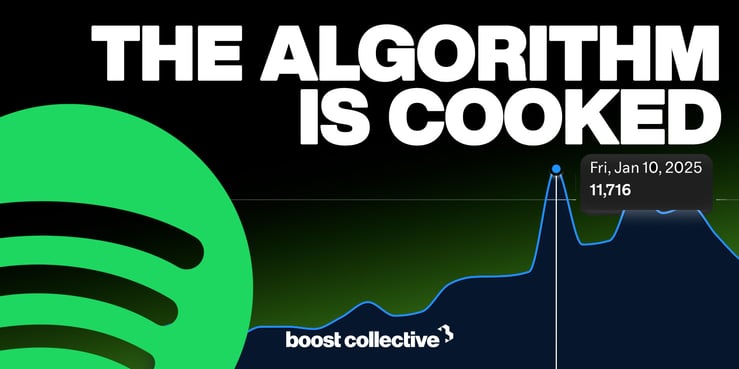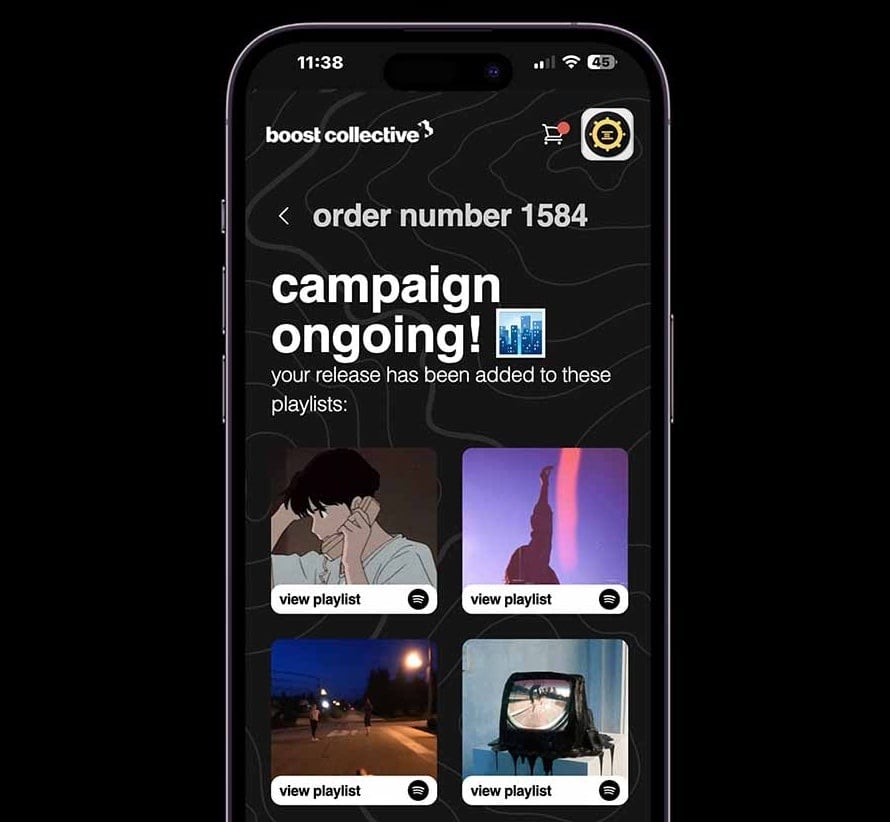
Spotify has long been a platform that independent artists have relied on for discovery. Through algorithmic features like Discover Weekly, Radio, and Autoplay, countless new artists have been able to gain exposure and build an audience. However, the tides seem to be shifting. Recently, the platform's algorithm appears to be prioritizing the same songs repeatedly, making it harder for new music to break through.
As someone who has run countless promotional campaigns to push tracks into Spotify’s ecosystem, I’ve noticed significant changes in how the algorithm rewards music. This article explores these trends, their impact on independent artists, and what strategies can still work in the current landscape.
How Spotify's Algorithm Used to Work
For years, the Spotify algorithm rewarded engagement metrics. If a song performed well in terms of repeat listens, low skip rates, and strong stream-to-listener ratios, it had a good chance of being pushed into algorithmic playlists and AutoPlay suggestions.
The process was relatively simple:
-
Drive an initial audience – Artists, labels, or marketers would push traffic to a song using playlist placements, influencer promotions, and Meta ads.
-
Measure engagement – If the song had strong engagement (i.e., high stream-to-listener ratio and low skip rates), Spotify’s discovery tools would start recommending it.
-
Gain organic traction – As the song gained streams through Spotify’s internal discovery mechanisms (Discover Weekly, Radio, Mixes, etc.), it would naturally grow.
This system was imperfect, but it made sense: If a song resonated with listeners, Spotify would amplify its reach. But things have changed.

The Problem: Repetition Over Discovery
Spotify's recommendation system now appears to favor familiarity over discovery. Listeners are being fed the same songs over and over again, with AutoPlay, AI DJ, and Song Radio often pulling from the same pool of music they’ve already streamed.
Here are some major shifts I’ve observed:
-
Song Radios are repetitive – Instead of introducing new songs, launching a song radio often recycles tracks users already know.
-
AI DJ lacks true curation – The AI DJ feature leans heavily on previously played tracks instead of surfacing fresh music.
-
Discover Weekly isn’t as adventurous – Once known for its ability to surprise listeners with new artists, Discover Weekly has become increasingly predictable.
This shift is making organic discovery significantly harder. Previously, a well-performing song could gain thousands of streams through Spotify's internal promotion mechanisms. Now, even objectively great tracks struggle to break through, with fewer algorithmic streams being generated.

The Implications for Independent Artists
These changes impact independent musicians the most. Without a label-backed push, many rely on Spotify’s algorithm to help them reach new listeners. With the discovery system now favouring familiarity, indie artists face a growing uphill battle.
Some key challenges include:
-
Higher acquisition costs – Since organic reach is declining, artists must spend more on ads, playlisting, and influencer promotions to get similar results.
-
Lower ROI on campaigns – In the past, a well-run promotion could snowball into algorithmic streams. Now, the returns on such campaigns are shrinking.
-
Fewer breakout moments – Viral hits are becoming less common without algorithmic support, making it harder for artists to experience sudden spikes in streams.
If these trends continue, breaking new music on Spotify will become increasingly expensive and difficult. This will disproportionately affect independent artists who lack major label backing.

A Possible New Approach: Maximizing Repeat Streams
While Spotify’s discovery tools are deprioritizing new music, one metric still seems to hold weight: repeat listening.
I’ve found that tracks with high stream-to-listener ratios continue to receive algorithmic boosts. This suggests that Spotify is prioritizing songs that users save and listen to multiple times over an extended period.
Here’s how artists can adapt:
-
Encourage repeat listens – Running campaigns that get users to stream the same track multiple times can signal to Spotify that the song is highly engaging.
-
Leverage direct engagement – Instead of focusing solely on initial exposure, engage with fans and encourage them to add the song to their personal playlists.
-
Build long-term listener relationships – An artist’s existing fan base is now more crucial than ever. Developing deeper relationships with listeners (e.g., exclusive content, behind-the-scenes access) can help sustain repeat streams.
This shift suggests that the old approach of pushing mass exposure might not be as effective anymore. Instead, strategies centered around retention and listener loyalty may become the key to success on Spotify.

Looking Ahead: Will Spotify Fix Discovery?
It’s unclear whether these algorithmic shifts are intentional or simply a byproduct of evolving AI-driven curation. However, if Spotify does not address the growing difficulty of discovery, breaking records will become significantly more costly.
Some potential changes we might see in 2024:
-
A refinement of the AI DJ – If Spotify listens to user feedback, the AI DJ could become a stronger discovery tool rather than just a glorified playlist generator.
-
More personalized recommendations – The company might tweak the algorithm to strike a better balance between familiarity and discovery.
-
New artist-friendly features – Spotify has experimented with artist-focused promotional tools in the past, and it’s possible they’ll introduce more features to help independent artists.
For now, though, independent artists must adapt. The old playbook isn’t as effective as it once was, and those who shift their strategies accordingly will have the best chance at success.
Here's a video Spotify CEO Daniel Ek posted on LinkedIn regarding the Q4 2024 results of Spotify. He mentions music is going to be a big focus for the company in 2025.
Conclusion
Spotify’s discovery tools have undeniably changed, and not for the better. While the platform once provided a powerful organic growth mechanism for independent artists, today’s algorithm prioritizes familiarity over fresh music. This shift is making it harder—and more expensive—to break new songs.
Despite this challenge, there are still ways to game the system. Maximizing repeat listens and focusing on fan retention may help compensate for the loss of algorithmic support. Until Spotify refines its discovery tools, artists and marketers must be willing to adapt their approach.
The hope is that Spotify will recognize the issue and adjust accordingly. If not, the cost of breaking new music will continue to rise, leaving independent artists with fewer opportunities to grow. The next few years will be crucial in determining whether Spotify remains a viable platform for organic artist discovery—or if it becomes just another pay-to-play system.
For now, the message is clear: The rules have changed, and success on Spotify now requires a different playbook.

Written by: Ronan Mullins | Co-Founder @ Boost Collective
